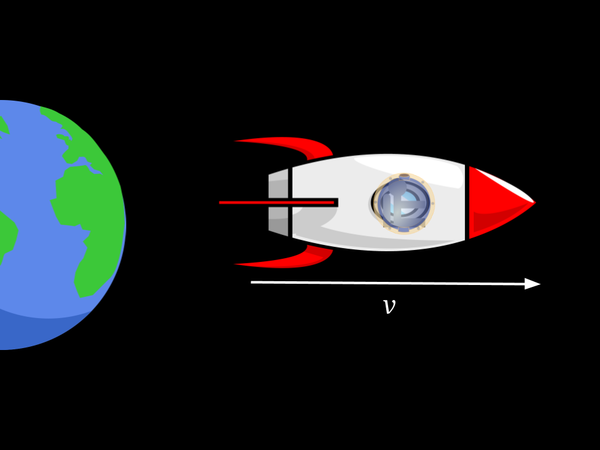To Space And Beyond! (The Earth)
The spacecraft The Newtonian is heading out from the Earth without propulsion at an initial velocity v . Which of the following could be a plausible crew report?

This section requires Javascript.
You are seeing this because something didn't load right. We suggest you, (a) try
refreshing the page, (b) enabling javascript if it is disabled on your browser and,
finally, (c)
loading the
non-javascript version of this page
. We're sorry about the hassle.
2 solutions
Why free fall ? The spacecraft moves out of the Earth and it must prevail over the force of the gravitation. An universal law of gravitation says as follows : F = (G x M1xM2) / (d^2), where :
F is force of the attraction between bodies, G is an universal gravitational constant, M1 and M2 are the masses of the bodies( in our case, the masses of the Earth and the spacecraft), and d is distance between these bodies.
More is the spacecraft away from the Earth, less is the force of pushing into the seats, i.e. it diminishes.
Oleg Yovanovich
Log in to reply
Well, first of all, free falling means a motion under gravity and gravity only. So, if we neglect the gravitational forces between the passengers and the spacecraft, which is typically incredibly small, then the motion of each passenger and the spacecraft are all free fall type. Next, yes, both the passengers and the spacecraft do have some acceleration which is NOT zero. BUT their accelerations are equal, so, the seat do not exert any forces. To get the above result, we need to actually assume the spacecraft is small enough, since the gravitational field in this case is not constant.
All of the spacecraft's components are subject to the same force, and thus experience the same acceleration. As the astronauts, seats, and rest of the spacecraft, are all accelerating at the same rate towards the Earth, they cannot exert any forces on each other.
@Oleg Yovanovich , I agree. There is always going to be gravitational attraction given by F g = G ⋅ r 2 m 1 ⋅ m 2 , so I don't think that the answer should be (B) .
Log in to reply
The key is that every component of the spacecraft is subject to an acceleration m 1 F g = r 2 G m 2 They are not accelerating relative to each other , and thus do not exert any forces mutually.
The spaceship and the crew have the same acceleration in the "seats direction" so the relative acceleration of the spaceship in respect with the crew is zero, meaning that there is no force keeping them on their seats.
Einstein's Principle of equivalence between gravity and acceleration explains this a lot easier
I think its because of the Newton first law, In an inertial frame of reference, an object either remains at rest or continues to move at a constant velocity, unless acted upon by a force.
It was quite dubious to answer this question, because the problem seems to imply that the gravitational force of the Earth causes the pushing into the seats. I didn't get it... And I would like to know if the velocity of the spacecraft diminishes. It does, right?
Log in to reply
i think so this question kind of implies that the gravity suddenly drops even outside of earth there is still some gravity
i think i got it-there is a pseudo force on people in the rocket acting in the forward direction, so they get pushed out of their seats. This pseudo force is balanced by the gravitational pull which is also present in the non-inertial frame
Relative to the Earth, the spacecraft is in free fall: all of its components, seats and passengers included, have the same acceleration, and therefore do not exert any forces on each other.